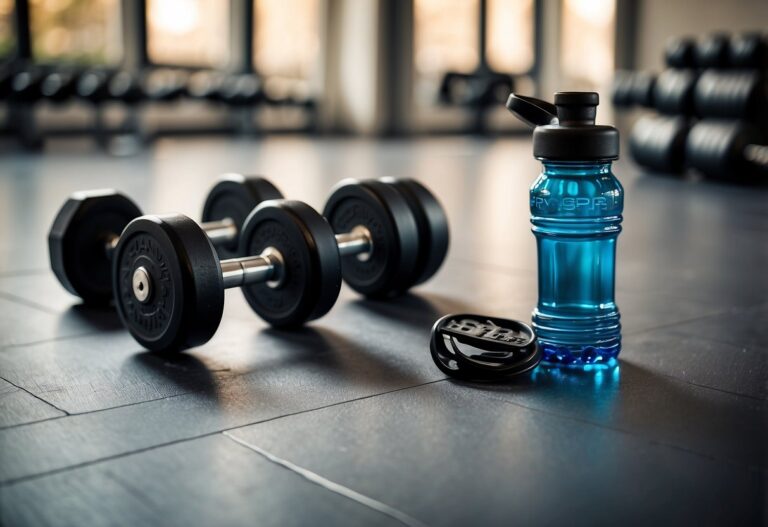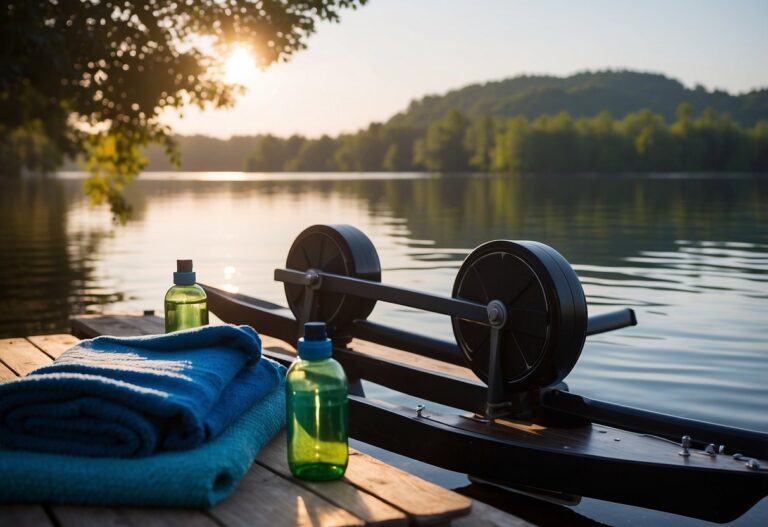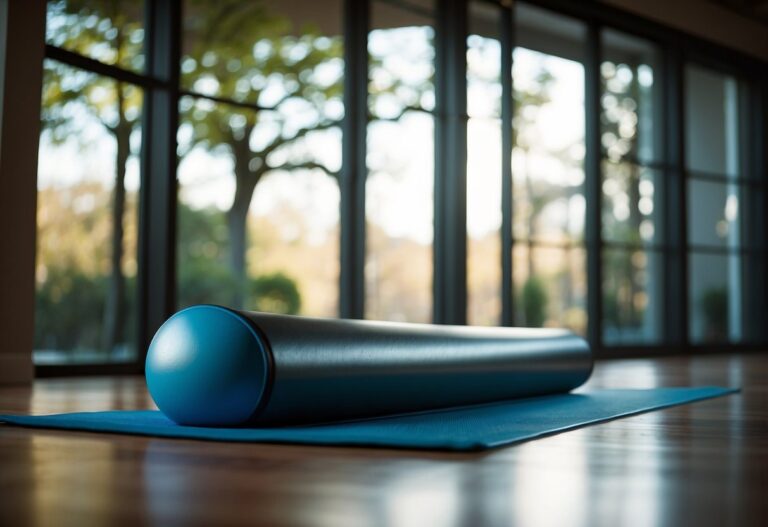Starting a workout routine at home can be a bit overwhelming, especially if you’re new to exercising. You might wonder where to start, what exercises to do, or how to stay motivated. Working out in the comfort of your own home offers the flexibility to tailor exercises to fit your lifestyle and schedule.

The key to success is to make small, consistent changes that fit easily into your daily routine. Finding a workout plan that suits your fitness level and goals is essential. By making exercise a regular part of your day, you’ll soon notice improvements in your strength, endurance, and overall well-being.
Start with a Warm-Up
Before diving into your workout, it’s important to start with a warm-up. Warming up helps prepare your muscles and joints for exercise, reducing the risk of injury.
A simple five-minute warm-up can make a big difference. Try something like walking or jogging in place for a few minutes.
You can follow a routine like the 5-minute full body warm-up on YouTube, which is great for at-home workouts. This will get your blood pumping and your muscles ready for more intense activity.
Incorporating stretches like reaching for your toes or doing slow arm circles can also help. Consider movements such as walking your hands out into a high-plank and then walking them back. This engages multiple muscle groups and prepares your body for exercise.
Remember to keep your warm-up light and easy. The goal is to gradually increase your heart rate and get your muscles moving.
Bodyweight Squats
Bodyweight squats are fantastic for building strength in your legs and enhancing overall fitness. To get started, stand with your feet a bit wider than shoulder-width apart. Your toes should point slightly outwards.
As you lower yourself, keep your back straight and your chest up. Bend your knees and push your hips back. Aim to go as low as you can while keeping your weight on your heels.
When you’re ready to come back up, drive through your heels and bring your hips forward. This movement helps power you back to the standing position. Practise doing multiple sets to improve your form and build strength.
Push-Ups
Push-ups are a great exercise for building upper body strength. They target your chest, shoulders, and triceps. Even if you find them challenging, you can start with simpler variations and progress over time.
Begin with wall push-ups. Stand a few feet away from a wall, place your hands on the wall, and lean forward. This helps you build strength without putting too much pressure on your wrists or shoulders.
Next, try knee push-ups. Get into a plank position but keep your knees on the ground. Lower your body and push back up. This eases you into the form of standard push-ups.
For more guidance, check out this beginner push-up workout on YouTube. Following tutorials can make the process easier and ensure you use the right technique.
Lunges
Lunges are one of the best exercises for your lower body. They target your quads, hamstrings, glutes, and calves. Plus, they help improve core stability and balance.
To do a basic forward lunge, start by standing with your feet hip-width apart. Step forward with one leg and bend both knees to a 90-degree angle. Ensure your front knee doesn’t go past your toes.
Remember to keep your torso upright and engage your core. If you feel unsteady, try doing lunges next to a wall or chair for support. For more detailed guidance, check out this beginner’s guide to lunges.
Plank
Planks are a fantastic exercise to strengthen your core without needing any equipment. To start, lie face down on a mat, and push up onto your elbows. Your elbows should be directly under your shoulders.
Keep your body in a straight line from head to heels. Make sure to engage your abdominal muscles and avoid letting your hips sag or rise too high.
For beginners, aim to hold the plank for 20-30 seconds. Gradually increase the time as your strength improves. Remember to breathe steadily. If you’re new to planking, take breaks as needed and build up your endurance over time.
If you want a bit more challenge, try a variation like the plank shoulder tap. In this variation, starting in a high plank position, you tap each shoulder with the opposite hand while keeping your body steady. This adds extra work for your core and balance.
Burpees
Burpees are a fantastic full-body exercise that you can do at home without any equipment. They work your arms, chest, core, glutes, and legs, making them very effective for building overall strength.
To do a burpee, start by standing with your feet shoulder-width apart. Lower your hands to the floor and jump your feet back into a push-up position. Do a push-up, then jump your feet back towards your hands and stand up.
Don’t worry if you’re not ready for the full version yet. You can modify the burpee by stepping your feet back instead of jumping them. Give it a try and see how you feel! Check out this guide on burpees for more details.
Chair Dips
Chair dips are a great exercise to strengthen your triceps. They’re easy to do at home with just a chair.
Start by sitting on the edge of a chair, with your hands gripping the edge.
Scooch forward until your behind is off the chair, and your feet are on the floor.
Lower yourself until your upper arms are parallel with the floor. Push through your palms to lift back up. Remember to keep your elbows close to your body.
Try to do a set of 10-15 reps. When you get stronger, you can use two chairs facing each other for support. Learn more about proper form.
Mountain Climbers
Mountain climbers are a fantastic exercise for building cardio endurance and core strength. They are practical because you can do them anywhere without any equipment.
Start in a high plank position with your hands directly under your shoulders. Make sure your body forms a straight line from head to toe.
Pull one knee towards your chest while keeping the other leg extended. Quickly switch legs, as if you’re running in place. Keep a steady pace and maintain a tight core to stabilize your body.
This exercise not only works your legs but also engages your shoulders, arms, and chest. You can even try variations, like adding push-ups or using a weighted sled, to make it more challenging.
Check out detailed instructions on how to do mountain climbers for more tips.
Leg Raises
Leg raises are great for strengthening your core, glutes, and hip flexors.
Start by lying flat on your back with your legs extended and your arms by your sides. Slowly lift your legs until they form a right angle with your torso. Hold for a few seconds, then lower them back down.
Repeating this exercise regularly can improve balance and stability. If you want a challenge, try adding ankle weights. Check out more tips for leg raises to perfect your form.
High Knees
High knees are a fantastic exercise for getting your heart rate up and improving your fitness.
To start, stand with your feet hip-width apart. Begin by jogging in place, lifting your knees as high as possible towards your chest.
Aim to keep a steady rhythm and pump your arms to help balance and coordination. Just 20-30 seconds can make a big difference.
For an intense workout, try doing high knees in a Tabata style. This involves 20 seconds of high knees followed by 10 seconds of rest, repeated for 8 sets.
High knees can be done anywhere, making them perfect for home workouts. No equipment is needed, so you can get started right away.
Try alternating high knees with other exercises like push-ups or lunges for a full-body workout. For example, you can do 30 seconds of high knees followed by 30 seconds of side lunges, as suggested in this routine.
This exercise not only boosts cardio but also engages your core and leg muscles, helping you build overall strength and endurance.
Benefits of At-Home Workouts
There are many advantages to exercising at home that can make it more appealing than going to the gym. These include being able to work out at any time, saving money, and tailoring your fitness routine to your needs.
Convenience and Flexibility
Working out at home provides unmatched convenience. You can exercise whenever it fits into your schedule, whether it’s early in the morning or late at night. This flexibility means you won’t have to worry about gym hours or travel time.
You also avoid crowded gyms and waiting for equipment to become available. Your home is available 24/7, so you can squeeze in a workout session between other daily tasks. This can be especially beneficial if you have a busy lifestyle.
Cost-Effectiveness
Another major benefit is cost-effectiveness. There’s no need for expensive gym memberships or costly fitness classes. You can save a significant amount of money by working out at home.
Many effective workouts at home require little to no equipment. Exercises such as push-ups, squats, and lunges can be performed without any gear. If you do need equipment, simple items like resistance bands or dumbbells are relatively inexpensive.
Customisable Routines
When you work out at home, you have full control over your routine. You can choose exercises that match your fitness level and preferences. This personalisation ensures you stay engaged and motivated.
Online resources provide countless workout plans, from beginner to advanced. Whether you prefer yoga, HIIT, or strength training, you can find a programme that suits you. You can also adjust your routine as you progress, keeping your workouts fresh and challenging.
By tailoring your workout to your needs, you are more likely to stick with it and achieve your fitness goals.
Fundamental Principles
When starting a workout routine at home, it’s crucial to keep a few fundamental principles in mind. These principles will help you set achievable goals, maintain consistency, and perform exercises correctly.
Setting Realistic Goals
Starting your fitness journey can be exciting, but it’s important to set realistic goals. Aim for small, achievable targets rather than overwhelming yourself with big ambitions. For example, if you’re just beginning, focus on working out three times a week for 20 minutes. This approach helps you build a habit without burning out.
Consider what you truly want to achieve. Whether it’s losing weight, gaining strength, or improving flexibility, define those goals clearly. Write them down and keep them visible. This way, you stay motivated and can celebrate each milestone.
Consistency Over Intensity
Consistency is more important than intensity when you are just beginning. It’s better to work out regularly for shorter periods than to push yourself too hard and risk injury. Try to establish a routine that you can stick to.
Set a regular time each day for your workout. Even if it’s just 15 minutes, sticking to a time helps build a habit. Remember, it’s not about how hard you work out, but about making exercise a part of your daily or weekly schedule.
Proper Form and Technique
Proper form and technique are critical to avoid injury and get the most out of your exercises. Always start with exercises you’re comfortable with and gradually move to more challenging ones.
For example, when doing push-ups or squats, pay attention to where your knees and elbows are, and ensure your back is straight. Watching instructional videos can be extremely helpful. Websites like Verywell Fit or Greatist provide detailed guides for beginners.
Focusing on proper form not only prevents injuries but also ensures that you are targeting the right muscles. Take it slow and keep practising, as mastery comes with time and patience.
Creating a Home Workout Space
Setting up a dedicated space for your workouts at home can make exercising more enjoyable and effective. Selecting a suitable area, gathering essential equipment, and considering safety are key steps.
Choosing the Right Space
Pick a Quiet Area: Choose a spot where you can focus without distractions. Garages, spare rooms, or even a corner of the living room can work well.
Adequate Space: Ensure there’s enough room to move freely. You’ll need space for stretching, lifting weights, and doing aerobic exercises.
Ventilation and Lighting: Good ventilation helps keep the area comfortable. Natural light is ideal, but you can use bright lamps if required. Proper lighting boosts your mood and visibility.
Noise Control: Consider how noisy your workouts might be for others in the house. A basement or garage can minimise disruptions.
Minimise Clutter: Remove unnecessary items to keep the area organised and safe.
Essential Equipment for Beginners
Bodyweight Exercises: Start with no-equipment exercises like push-ups, squats, and lunges. These are effective and require no special gear.
Yoga Mat: A yoga mat provides cushioning for floor exercises. It helps with grip during stretching and core workouts.
Resistance Bands: Resistance bands are versatile and great for strength training. They hardly take up any space and are inexpensive.
Dumbbells: Invest in a pair of adjustable dumbbells. They help build muscle and improve strength across various exercises.
Jump Rope: A jump rope is excellent for cardio workouts. It’s easy to store and useful for high-intensity interval training (HIIT).
Pull-Up Bar: If you have space, a pull-up bar is a great addition. It helps build upper body strength effectively.
Storage Solutions: Use storage bins or shelves to keep your equipment organised. This not only saves space but also makes it easier to find what you need.
Safety Considerations
Stable Flooring: Ensure the floor can support your activities, especially if lifting weights. Carpets might not be ideal for all exercises. A firm, non-slip surface is best.
Clear Pathways: Always keep pathways clear to avoid tripping hazards. This is crucial for a safe workout environment.
Proper Warm-Up and Cool-Down: Never skip your warm-up and cool-down routines. These are essential to prevent injuries and aid in recovery.
Stay Hydrated: Keep water accessible during your workouts. Staying hydrated is important, especially during intense sessions.
Consult Professionals: If unsure about your workout routine or equipment use, don’t hesitate to consult a fitness professional. They can guide you on form and technique to prevent injuries.
Emergency Plan: Have a plan in case of accidents. Keep a list of emergency contacts and a first-aid kit nearby.
By carefully designing your workout space, you can enjoy efficient and safe exercise routines right at home.







